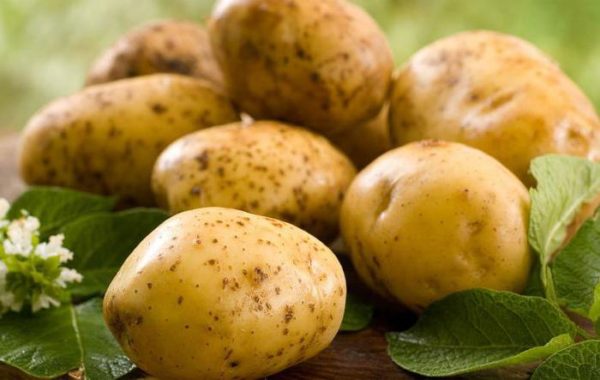
Potato is a fairly common culture in many countries. For home and industrial cultivation, varieties are selected that give a large crop, are easy to care for and resistant to most of the known diseases and pests. An example would be Zekur potatoes.
German selection Zekura potatoes are unpretentious in leaving and are rather simple grown. Large tubers, the preservation of taste for four months, the high content of starch - these and other advantages of Zekura potatoes made it quite popular not only at home, but also in several European countries.
Content
Description and characteristics of potatoes Zekura
Experienced farmers and gardeners explain the high popularity of potatoes of the Zekura variety by the unpretentious nature of the species, the simplicity of the cultivation process. The bushes of this representative of a starchy vegetable crop are not characterized by sparseness, which greatly simplifies the care procedures - loosening, weeding. The nest formed by the bush is very compact, due to which a large number of units can be placed on small areas, and it simplifies harvesting.
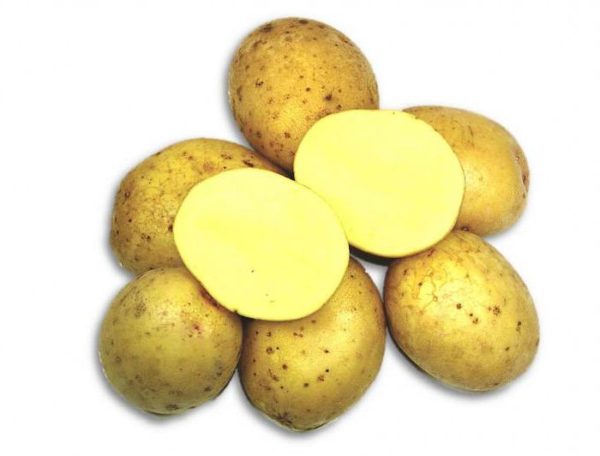
As a rule, the shape of the tubers is regular, oblong. Eyes are small in size. The peel and flesh are yellow. In the description of Zekura potatoes, it is indicated that the weight of one tuber often reaches 150 grams. The minimum weight is 59 grams. Zekura variety has a high starch content - ranging from 13 to 18.2%. This allows him to preserve the presentation and taste for a long time (for three to four months).
Potato Zekura: productivity, selection history
Productivity
From 12 to 25 tubers can be found in one nest during harvesting. With strict observance of all rules of care, cultivation of varieties in suitable climatic conditions, it is possible to collect from an average of 323 to 325 centners per hectare.
Selection history
Variety Zekura - the result of the work of breeders from Germany. Through numerous experiments, they managed to achieve increased endurance from root crops, resistance to the most common diseases, short ripening periods and high palatability. Also, the focus of breeders was the shelf life. The cultivated variety, called Zekura, is now known in many countries of Europe.
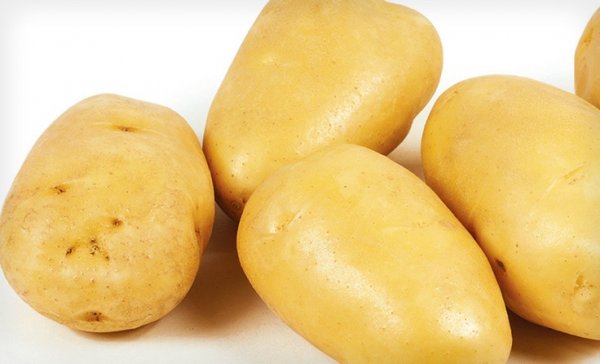
Zekura potatoes are included in the State Register of the Russian Federation. It is recommended for cultivation in territories belonging to the Central Black Earth region.
In the countries of the former CIS, Zekura is actively grown by farms of Moldova, Belarus and Ukraine.
Advantages and disadvantages of the variety
Speaking about the advantages of the Zekura variety, farmers note its yellow flesh, which is equally suitable for mashed potatoes, frying, cooking soups, stews, salads. It should also be added that the root crop is stored for a long time, but provided that the room has moderate humidity and temperature ranges from 1-2 °. There are practically no green tubers in the harvested crop. The plant retains varietal qualities for several years.
During culinary use, one should take into account its slight boiling point, which can be attributed to minor disadvantages. Another minus of the variety is the change in the size of tubers during a period of lack of water and heat.Even with natural unpretentiousness, these factors have a negative effect on the root crop, leading to its reduction to 50-70 grams.
Grade value
Varietal values are:
- Undemanding care. If there is a prolonged absence of natural rainfall, it is enough to carry out artificial irrigation from time to time. This will help to chop the tubers. Unlike many other varieties requiring fertilizer throughout the growing season, this species does not need this. Description varieties and reviews of potatoes Zekura confirm this.
- The plant adapts well to adverse climatic conditions - heat, drought, sharp drops and temperature rises. Due to this, high productivity is observed even when cultivated in Siberia and Kazakhstan.
- The crop is stored long enough, the natural loss of tuber quality is minimal.
- High commercial qualities of tubers - defective, green, too small, or, conversely, excessively large potatoes are almost never found in the crop.
- The fleshy yellow flesh has excellent palatability. Due to this, its use in cooking is quite wide.
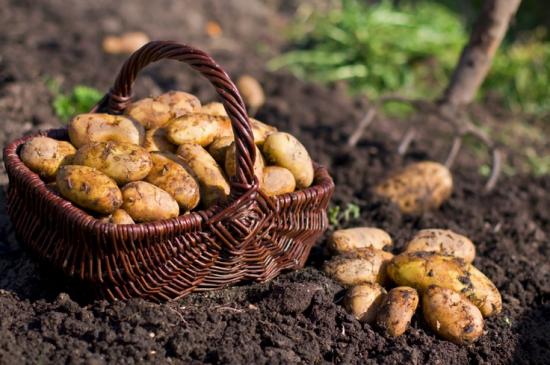
This value of Zekura potatoes explains its prevalence and popularity among farmers and homeowners in both Europe and the former Soviet Union.
Growing rules
Cultivation of the Zekura variety is not difficult even for beginner growers. In general, the rules can be formulated as follows:
- Landing is recommended to be carried out in the soil, which managed to warm up to a depth of not less than 10-15 cm. The temperature of the soil should vary from +8 to + 10 °. The best time for this is mid-May. Strict adherence to these conditions helps to accelerate germination. The likelihood of rotting of tubers is also excluded;
- seed is placed in the soil in rows according to a 60x35 cm pattern. Potatoes are buried in the soil by 8-10 cm (the final figure is determined by the type of soil used);
- to further increase productivity, active fertilizer is added to each well.
Important: in order not to observe a natural decrease in productivity, planting material should be updated in a timely manner.
Care Rules
The Zekura cultivar is unpretentious. The owner is required to timely weeding, as well as loosening after artificial or natural irrigation. The first weeds are harvested in June, and then as needed. In the first half of July, hills are cultivated, which helps to maintain soil moisture longer and form a compact, natural volume nest. In general, for the entire growing season it is recommended to carry out at least three hills.
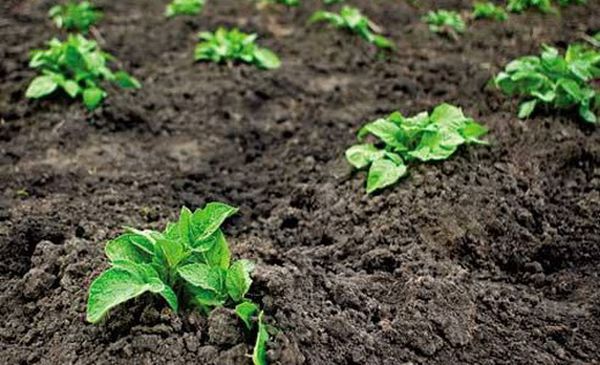
Hilling must be carried out after watering the soil. This will help to avoid the formation of a crust on moist soil, which interferes with the free penetration of air.
To protect the soil from overheating and, at the same time, excessive evaporation of moisture, mulching of the plants is carried out. As a material, you can use humus, needles or rotted sawdust.
Diseases and Pests
Characteristics of Zekur potatoes and reviews of the variety indicate that this species is resistant to most known pests and diseases. However, wireworm, Colorado potato beetle, bear, scoop caterpillar pose a serious threat to potatoes.
Wireworms are often found in areas that have not been sufficiently processed, as well as sawdust, manure, wheatgrass. The nutrient medium for this pest is acidic soil. To change the pH of the soil, it is recommended to carry out the following procedures:
- liming (at 10 m2 1 kg of necessarily slaked soda is introduced);
- application of wood ash (at 10 m2 two buckets will be required with a total volume of 20 l).
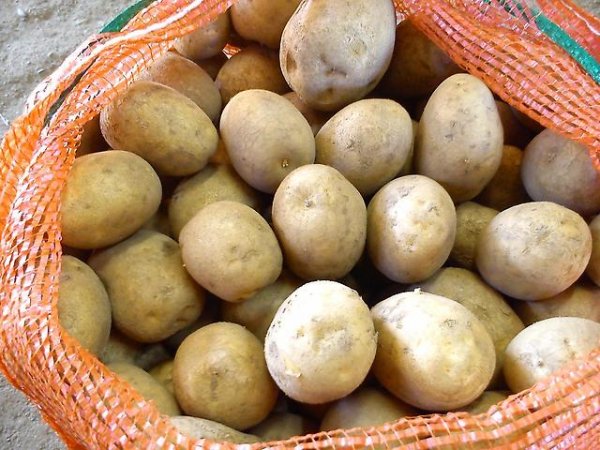
If you need to deal with pests that threaten the terrestrial part of plants, the preparations intended for this are used exclusively according to the instructions.
Of folk remedies, the most effective is the planting in any order of garlic, marigolds, calendula, coriander. The smell of these plants does not like the bear.
Harvesting and storage of crops
Zekura's harvest is usually carried out from mid-August to mid-September. With strict observance of cultivation rules, about 200 kg of potatoes can be harvested from each hundredth.
The room in which the harvested potatoes will be stored is pre-disinfected and dried. The tubers themselves are carefully sorted, those that have signs of disease, any damage are removed. Tubers are also dried and cleaned from the ground. For storage, wooden boxes and special nets are best suited. The optimum temperature is from 1 to 2 ° C. Natural light should be excluded - so the root crops will not turn green and will not begin to sprout.
Those tubers that are intended to be used as seed should be stored separately. At least twice a month, the condition of the tubers is evaluated, especially for rot. About two weeks before the start of the planting period, the seed material is transferred to a warm, lighted room.
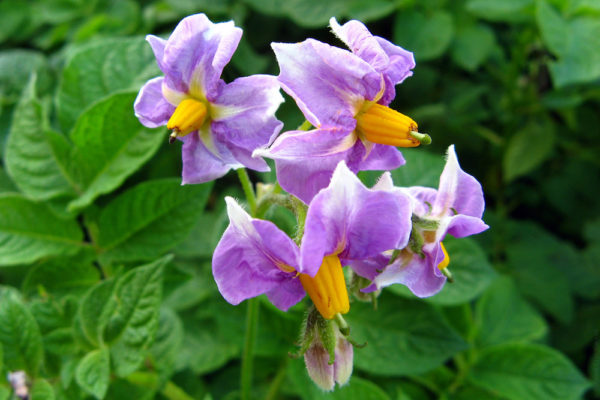
Reviews
In order to make a complete picture of Zekur potatoes, it is not enough to read only the description of the variety, consider all available photos; It will not be superfluous to read reviews. Here are some of them.
Alexander, 35 years old, Moscow region:
I have been dealing with potatoes for 10 years. Growing many varieties. Once at an exhibition I saw a German variety Zekura. I really liked the bush itself and the tubers. After talking with the owner of the plot on which the presented potato grows, I decided to try to plant. Allocated a small plot in his household. Planted in May, and harvested in August. Even from the amount that he planted, a lot has grown. I liked the taste.
Irina and Mikhail, 49 years old, Minsk:
We are the owners of the farm. We grow several varieties of potatoes on our lands. Two years ago, Zekur was first planted. They didn’t know the hassle. There were no pests, since the land is regularly cultivated. And the variety itself is resistant to them. The first experimental crop was sold at the September fair. People with interest examined and bought neat, bright potatoes. Many of them returned a few days later and asked to bring more - I really liked the taste.
Natalia, 40 years old, Kiev:
She planted 10 bushes of Zekura potatoes in her country house, a friend advised. Especially did not bother to weeding, loosening. But, despite this, I got a good harvest. The taste of potatoes is excellent.
Svetlana, 54 years old, Moscow:
I am the owner of the restaurant. We try to purchase vegetables from farmers. Once a regular supplier proposed a new variety - Zekura. I took a little for a test. The taste is saturated, very bright. The only thing is that the potato is very crumbly, which in itself is not bad, it is difficult to use it in dishes where it must keep its shape. But for mashed potatoes, soups, salads - a great option. Now Zekura is my chef's favorite variety for making his signature puree soup.




 Description and description of varieties in Belarus with a photo
Description and description of varieties in Belarus with a photo Do I need to pick flowers from potatoes: why do they do it
Do I need to pick flowers from potatoes: why do they do it When to dig potatoes: timing and availability of new potatoes
When to dig potatoes: timing and availability of new potatoes How to grow a good potato crop: various methods and methods, planting and care
How to grow a good potato crop: various methods and methods, planting and care